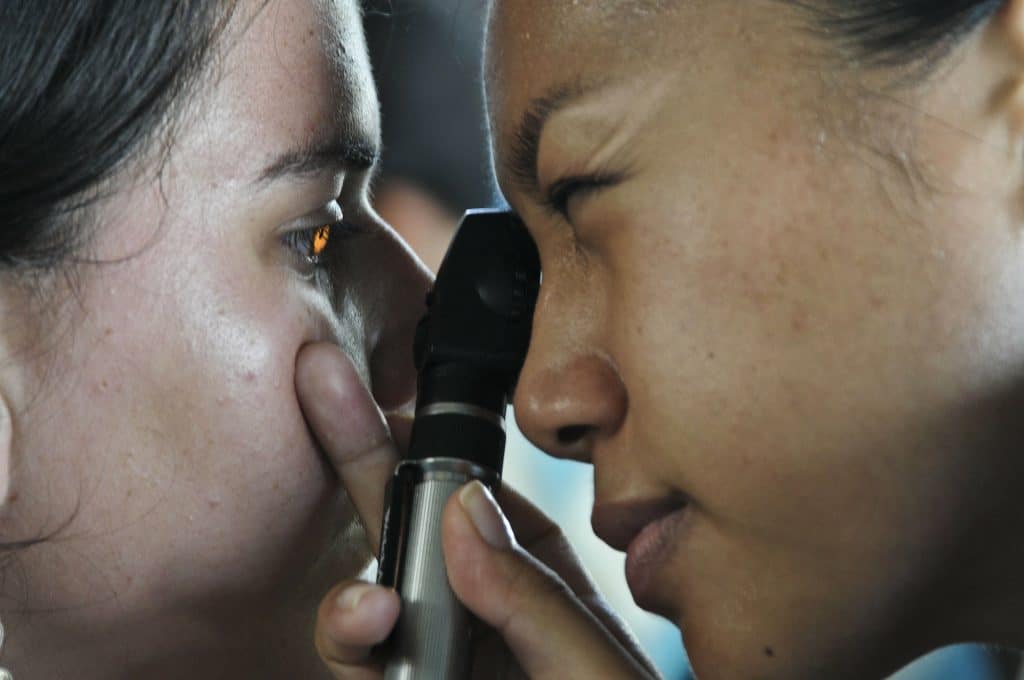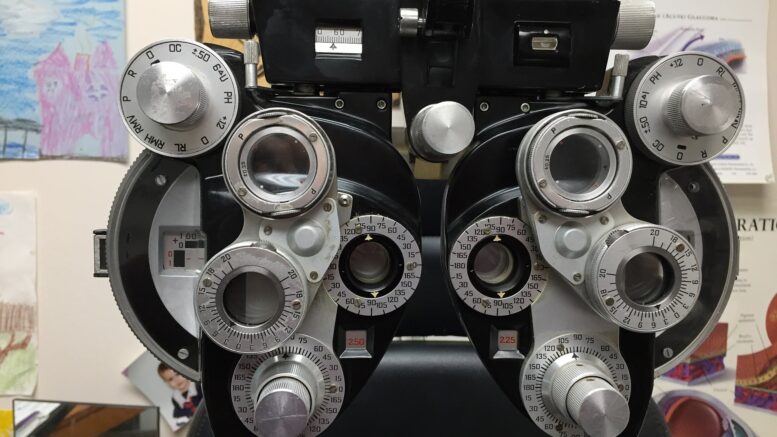Optometrist Equipment – Overview
Optometrist equipment is a huge part of the trade. Every doctor requires the appropriate equipment to work. The same is true for Optometrist.
However, as the profession focuses solely on the eyes of humans, the tools are different.
The eye is a sensitive part of the body. Hence, doctors use painless and accurate equipment for diagnosing any eye’s health problem or checking the status of the eye’s health.

Optometrist Equipment – The tools used during examination of eyes’ health status
Optometrist Equipment – The tools used during examination of eyes’ health status
While the tools might look intimidating, they are made while keeping the eyes in mind. It means that they are safe to use in one of the most sensitive areas on the face.
Here is a list of tools that Optometrist use while diagnosing eyes.
1. Tonometer
Sustained fluid pressure inside the eyeball keeps it working. However, if the pressure increases to a certain degree, it can cause permanent damage to the optic nerve. To check the pressure of the fluids, optometrists use a tonometer.
The tonometer gently touches the cornea of the eye to check the pressure. Before using the tonometer, doctors can use the numbing drops.
Also, the air-puff tonometer is available in the market. It blows air on the eyes to measure the eye pressure.
The disorder of high pressure in the eyeball is called glaucoma.
2. Retinal Camera
A retinal Camera is essentially a low-powered microscope used to look at the interior surface of the eye. The specialist can use different pictures to take images of different parts of the retina.
Doctors use the device to monitor the changes in the eye over time and diagnose several diseases.
3. VT1 Vision Screener
It is the ultimate tool to identify major visual problems. The device is light in weight, which makes it easily portable. Moreover, it is simple to use.
The device can help identify visual problems of patients of all ages. It is effective on six months old children.
VT1 Vision Screener does not require dilation of pupils and can help identify a range of eye diseases.
4. Snellen Chart
It is the physical or digital chart that has alphabets in decreasing order of sizes. The optometrist places it 20 feet or 6 meters away from the reader.
At a time, the reader can only use one eye to read the letters to determine the correct prescription. If the patient cannot read all the letters, the optometrist will use a metal eyeglasses frame. Here, the doctor will apply different lenses till the patient can read all the letters.
5. Retinoscope
Refractive errors were hard to judge in children, mentally challenged, or patients physically unable to offer feedback. Retinoscope is the method for these patients.
The retinoscope has is a mirror that shines light into the eyes of the patient. The hole in the center of the device allows the device to examine the eyes and determine the refractive error correctly.
6. Specular Microscope
The innermost lining of your cornea comprises cells layers that do not regenerate. However, they do change shape and size to fill any space left due to the loss of other cells.
The loss can happen due to corneal diseases, extended or overuse of contact lenses, and intraocular surgeries.
The device helps measure the endothelial cell density, helping in determining the course of action to protect the sight.
7. Slit Lamp
It is a device that offers a three-dimensional view of the eye. Doctors use it to look at the cornea, sclera, and iris. Different lenses between the lap and cornea can help see deeper structures like the retina, optic nerve, and the area where fluid drains out.
The device can help identify several disorders, and pinpoint any foreign objects in the eye. It is also effective in finding eye problems that might have occurred due to other diseases or contact lenses.
8. Autorefractor
It is another method of checking the refractive error in the human eye. Here, the patient only looks into the machine, and a picture moves in and out of focus.
The device identifies when the image is on the retina and takes appropriate readings. After several readings, the average of the data helps decide the prescription.
The method works best to avoid errors.
Importance of Optometrist Equipment
The new technology has enabled optometrists to identify and rectify or control eye diseases in infants and other specially-abled individuals.
Technology has been a boon for the healthcare world. This equipment help doctors do their job.
Conclusion
Advanced technology has made eye healthcare more accessible to individuals of the world.
Moreover, the optometrist equipment ensures that patients get proper care every time they step into the doctor’s office.
